Cas13d knockdown of lung protease Ctsl prevents and treats SARS-CoV-2 infection
- PMID: 35879545
- PMCID: PMC10082993
- DOI: 10.1038/s41589-022-01094-4
Cas13d knockdown of lung protease Ctsl prevents and treats SARS-CoV-2 infection
Abstract
SARS-CoV-2 entry into cells requires specific host proteases; however, no successful in vivo applications of host protease inhibitors have yet been reported for treatment of SARS-CoV-2 pathogenesis. Here we describe a chemically engineered nanosystem encapsulating CRISPR-Cas13d, developed to specifically target lung protease cathepsin L (Ctsl) messenger RNA to block SARS-CoV-2 infection in mice. We show that this nanosystem decreases lung Ctsl expression in normal mice efficiently, specifically and safely. We further show that this approach extends survival of mice lethally infected with SARS-CoV-2, correlating with decreased lung virus burden, reduced expression of proinflammatory cytokines/chemokines and diminished severity of pulmonary interstitial inflammation. Postinfection treatment by this nanosystem dramatically lowers the lung virus burden and alleviates virus-induced pathological changes. Our results indicate that targeting lung protease mRNA by Cas13d nanosystem represents a unique strategy for controlling SARS-CoV-2 infection and demonstrate that CRISPR can be used as a potential treatment for SARS-CoV-2 infection.
© 2022. The Author(s), under exclusive licence to Springer Nature America, Inc.
Conflict of interest statement
Competing interests
Q.W., Z.C. and Y.D. are inventors on a patent (US Patent Application no. 17/626,482 entitled ‘Nanoparticle Systems for Targeted Delivery of CRISPR–Cas13 and Methods of Using Same’ filed 12 January, 2022, patent pending; European Patent Application no. 20840456.6 entitled ‘Nanoparticle Systems for Targeted Delivery of CRISPR–Cas13 and Methods of Using Same’ filed 12 January, 2022, patent pending) filed by Duke University that relates to the research reported in this paper. J.H. is a consultant for or owns shares in the following companies: Kingmed, MoreHealth, OptraScan, Genetron, Omnitura, Vetonco, York Biotechnology, Genecode, VIVA Biotech and Sisu Pharma and received grants from Zenith Epigenetics, BioXcel Therapeutics, Inc. and Fortis Therapeutics. The remaining authors declare no competing interests.
Figures
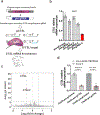
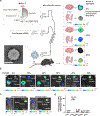


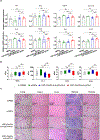
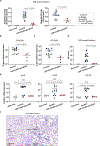
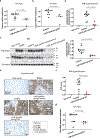


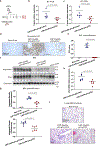


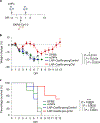



Similar articles
-
COVID-19 receptor and malignant cancers: Association of CTSL expression with susceptibility to SARS-CoV-2.Int J Biol Sci. 2022 Mar 6;18(6):2362-2371. doi: 10.7150/ijbs.70172. eCollection 2022. Int J Biol Sci. 2022. PMID: 35414771 Free PMC article.
-
Hyperglycemia induced cathepsin L maturation linked to diabetic comorbidities and COVID-19 mortality.Elife. 2024 Aug 16;13:RP92826. doi: 10.7554/eLife.92826. Elife. 2024. PMID: 39150053 Free PMC article.
-
Cathepsin L plays a key role in SARS-CoV-2 infection in humans and humanized mice and is a promising target for new drug development.Signal Transduct Target Ther. 2021 Mar 27;6(1):134. doi: 10.1038/s41392-021-00558-8. Signal Transduct Target Ther. 2021. PMID: 33774649 Free PMC article.
-
SARS-CoV-2 pandemics: An update of CRISPR in diagnosis and host-virus interaction studies.Biomed J. 2023 Apr;46(2):100587. doi: 10.1016/j.bj.2023.02.007. Epub 2023 Feb 25. Biomed J. 2023. PMID: 36849044 Free PMC article. Review.
-
Cathepsin L in COVID-19: From Pharmacological Evidences to Genetics.Front Cell Infect Microbiol. 2020 Dec 8;10:589505. doi: 10.3389/fcimb.2020.589505. eCollection 2020. Front Cell Infect Microbiol. 2020. PMID: 33364201 Free PMC article. Review.
Cited by
-
Deciphering and targeting host factors to counteract SARS-CoV-2 and coronavirus infections: insights from CRISPR approaches.Front Genome Ed. 2023 Jul 13;5:1231656. doi: 10.3389/fgeed.2023.1231656. eCollection 2023. Front Genome Ed. 2023. PMID: 37520399 Free PMC article. Review.
-
Polypurine reverse hoogsteen hairpins as a therapeutic tool for SARS-CoV-2 infection.J Biol Chem. 2024 Nov;300(11):107884. doi: 10.1016/j.jbc.2024.107884. Epub 2024 Oct 11. J Biol Chem. 2024. PMID: 39395809 Free PMC article.
-
Programmable RNA targeting with CRISPR-Cas13.RNA Biol. 2024 Jan;21(1):1-9. doi: 10.1080/15476286.2024.2351657. Epub 2024 May 19. RNA Biol. 2024. PMID: 38764173 Free PMC article. Review.
-
Lung-specific supramolecular nanoparticles for efficient delivery of therapeutic proteins and genome editing nucleases.Proc Natl Acad Sci U S A. 2024 Aug 13;121(33):e2406654121. doi: 10.1073/pnas.2406654121. Epub 2024 Aug 8. Proc Natl Acad Sci U S A. 2024. PMID: 39116129 Free PMC article.
-
Regulation of Peptidase Activity beyond the Active Site in Human Health and Disease.Int J Mol Sci. 2023 Dec 4;24(23):17120. doi: 10.3390/ijms242317120. Int J Mol Sci. 2023. PMID: 38069440 Free PMC article. Review.
References
Publication types
MeSH terms
Substances
Grants and funding
LinkOut - more resources
Full Text Sources
Other Literature Sources
Molecular Biology Databases
Miscellaneous

